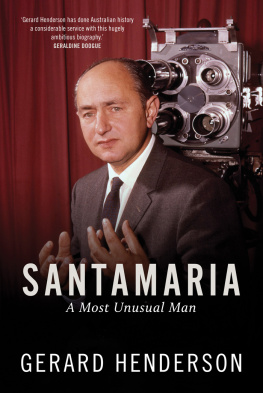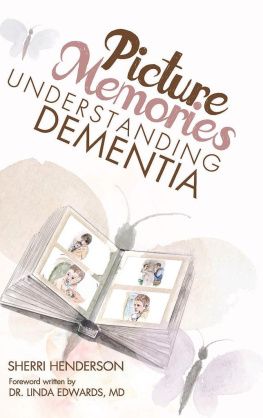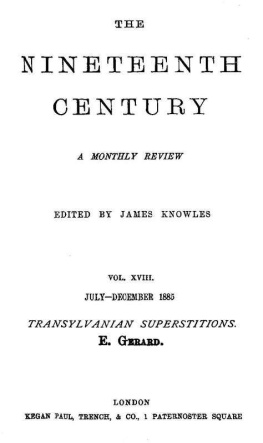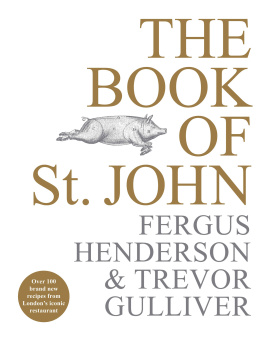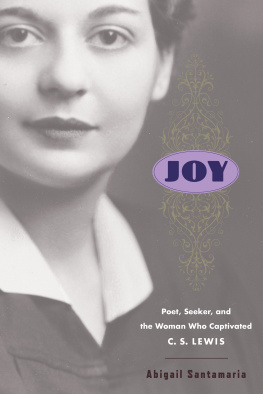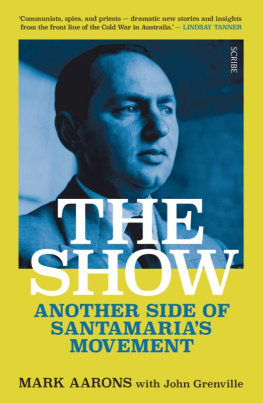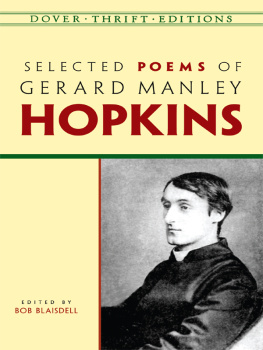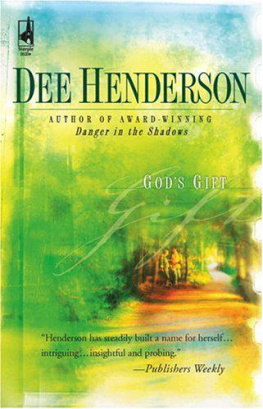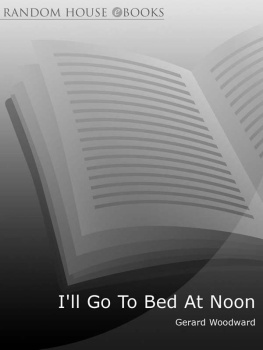THE MIEGUNYAH PRESS
An imprint of Melbourne University Publishing Limited
1115 Argyle Place South, Carlton, Victoria 3053, Australia
www.mup.com.au
First published 2015
Text Gerard Henderson, 2015
Design and typography Melbourne University Publishing Limited, 2015
This book is copyright. Apart from any use permitted under the Copyright Act 1968 and subsequent amendments, no part may be reproduced, stored in a retrieval system or transmitted by any means or process whatsoever without the prior written permission of the publishers.
Every attempt has been made to locate the copyright holders for material quoted in this book. Any person or organisation that may have been overlooked or misattributed may contact the publisher.
Cover design by Philip Campbell Design
Typeset in Minion 11/14.5pt by Cannon Typesetting
Printed in China by 1010 Printing International Ltd
National Library of Australia Cataloguing-in-Publication entry
Henderson, Gerard, author.
Santamaria: a most unusual man/Gerard Henderson.
9780522868586 (hardback)
9780522868593 (ebook)
Includes bibliographical references and index.
Santamaria, B. A. (Bartholomew Augustine), 19151998. PoliticiansAustraliaBiography.
324.2092
Viva Cristo Rey!
He died a beautiful Christian death.
Most Reverend George Pells panegyric for Bob Santamaria, St Patricks Cathedral, East Melbourne, 3 March 1998
A death in Kewon Ash Wednesday
In life Bartholomew Augustine Santamaria portrayed himself as pushing inexorably against the tidea man standing almost alone against political, social, economic and, later, even religious fashion. In death, however, the currents were with him. Very few Australians receive such a send-off. There were final prayers with Archbishop George Pell (then the Catholic Archbishop of Melbourne), along with a deathbed visit from Prime Minister John Howard, and then a State funeral, which took the form of a Solemn Pontifical Mass of Christian Burial followed by a private interment. The latter ceremony was conducted by Dr Eric DArcy (the Catholic Archbishop of Hobart).
Santamaria died at Caritas Christi Hospice, Studley Park Road, Kew (next door to Raheen, residence of the Catholic Archbishop of Melbourne between 1918 and 1981), late in the afternoon of 25 February 1998Ash Wednesday in the Church calendar of that year. He had been seriously ill since the previous October, when he was hospitalised for treatment of a malignant brain tumour.
As death became imminent, John Howard took an RAAF flight from Canberra to Melbourne, arriving at Caritas Christi at around 2pm. Santamaria died at around 4.45pm, having received extreme unctionthe Roman Catholic sacrament by which the forehead of a person on the point of death is annointed with sacred oil.
Soon after, Dr Joseph N. Santamaria described his older brothers priorities as his religion and his family, then his involvement in the political controversies of the day. He added, and, of course, the Carlton Football Club. Dr Santamaria referred to the visit of the Papal Nuncio Franco Brambilla (the Vaticans ambassador to Australia) to his brothers deathbed in mid-February 1998 as moving: Bob addressed him in Italian, and the Papal Nuncio replied in Italian. Then they grasped hands, and Archbishop Brambilla gave him a little homily about leaving this world and how eventually all of us would be reunited and we should look forward to that meeting. He then said he would impart a special apostolic blessing and told Bob: You and I will understand this because I am going to speak in Latin. It pleased Bob enormously.
Relatives reported that, although gravely ill, Santamaria remained coherent until the last days of his life. In an article written before his death (and published in the Age on the morning after), George Pell described his friends final days:
During his last days he was paralysed on his left side, unable to speak and only able to move his right arm. But when I blessed him, he struggled successfully to make the sign of the cross. The gesture was not a poignant return home after a lifetime of wandering, it was a determined reaffirmation of the faith that inspired him through so many vicissitudes, that sustained him in defeats and victories and brought him to the God he served so well.
In the Australian of the same day Dr Pell was reported as saying that, on the morning of his death, Santamaria was desperately ill and barely conscious. He commented that in their final exchanges they had discussed Mr Santamarias abiding passion for the religious struggle.
John Howard stayed some forty-five minutes at the bedside. Australian Financial Review columnist and Santamaria friend Christopher Pearson declared, We cant know what went through Bob Santamarias mind as the Prime Minister was brought to his bedside. But it was a silent encounter, of the in-extremis kind. Bob Santamaria departed this life, soon after the Prime Minister left his bedside, surrounded by about fifteen members of his immediate family.
Santamaria, born in August 1915, was called Bobby by his parents and a couple of his contemporaries, Bob by his friends, associates and opponents, and BAS by some of his colleaguesand also, on occasion, Santa. Shortly after birth, Santamaria was baptised into the Catholic faith and remained in Catholicor essentially Catholicorganisations for most of his life.
B.A. Santamaria died shortly before the evening news bulletins went to air on Ash Wednesday 1998. Since his death was anticipated, reports and obituaries had been prepared well in advance. The television and radio news bulletins gave wide coverage to Bob Santamarias death and the Prime Ministers deathbed visit. The following day newspapers were replete with the Santamaria storyespecially in Sydney. The Sydney Morning Herald led with a front-page analysis of Santamarias contribution to Australian public lifewhich I wrote. There was also an obituary by Ian Hicks, along with articles by James McClelland and Peter Coleman. The tabloid-size Daily Telegraph gave its entire first page to the storyincluding a photograph and a large heading: B.A. Santamaria 19151998/Death of a Warrior/PM flies to bedside. On , the Daily Telegraph carried a lengthy obituary by Tony Abbottthe Member for Warringah who was then a parliamentary secretary in the Howard government. Abbotts concluding comment identified the central weaknesses in Santamarias political method of operation:
He could not readily bring himself to lend public support to those who shared 90 per cent of his ideals but were unableperhaps for reasons of stateto accept the entirety of his analysis. In particular, he never quite lost his 1920s Catholic working-class conviction that the conservative parties embodied a WASP [white Anglo-Saxon Protestant] conspiracydespite his friendship with Robert Menzies, respect for Malcolm Fraser and reluctant admission that elements of the DLP [Democratic Labor Party] were alive and well and living inside the Howard Government.


